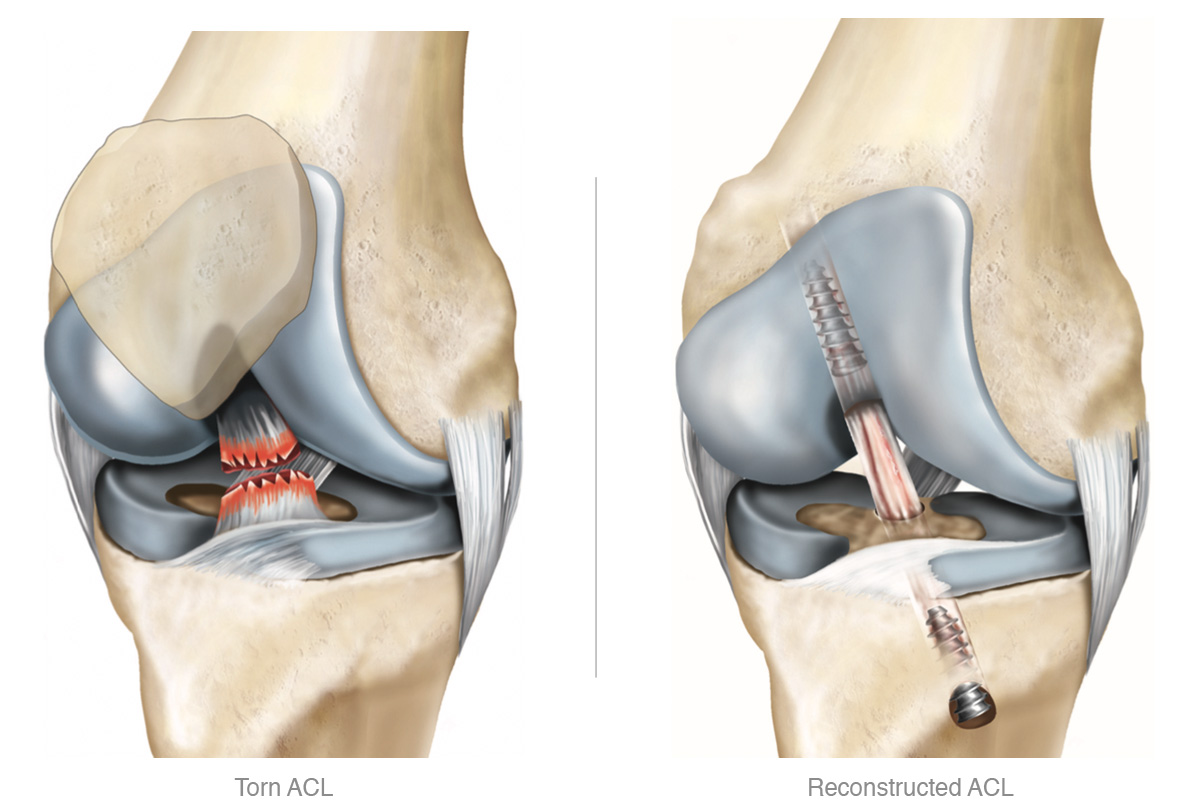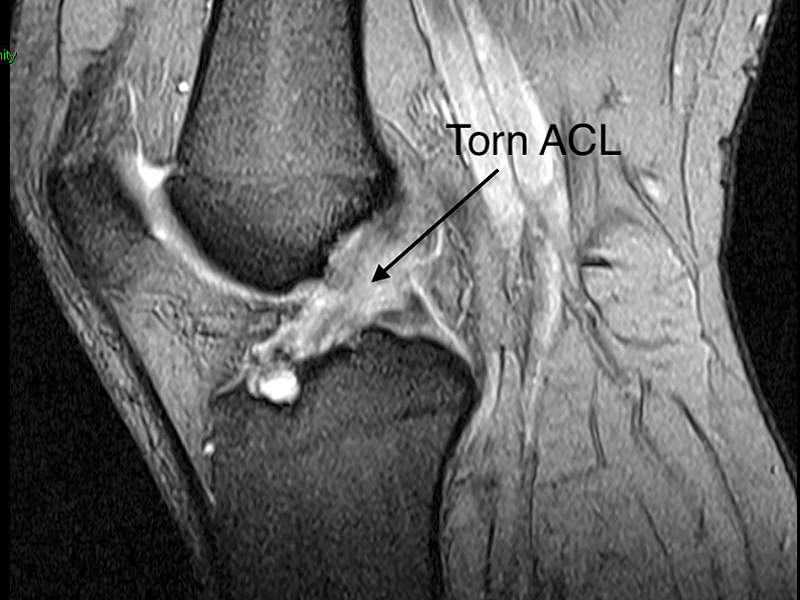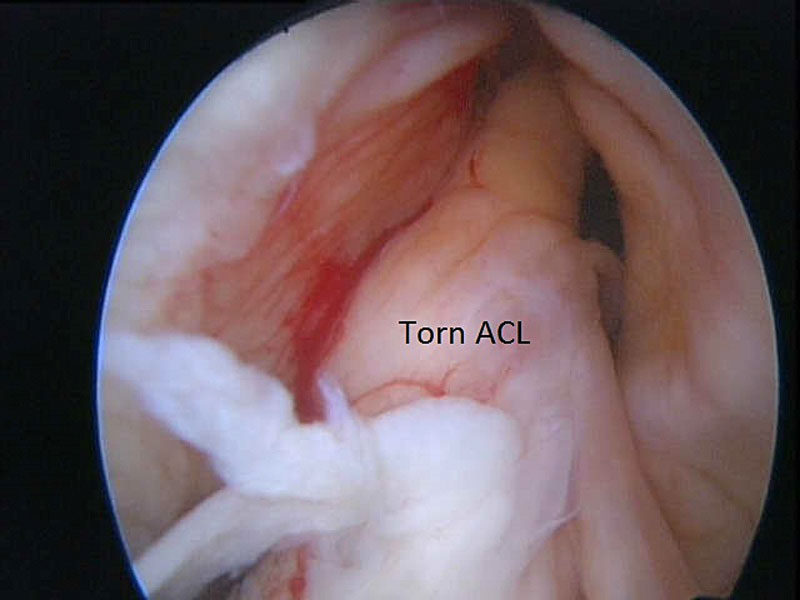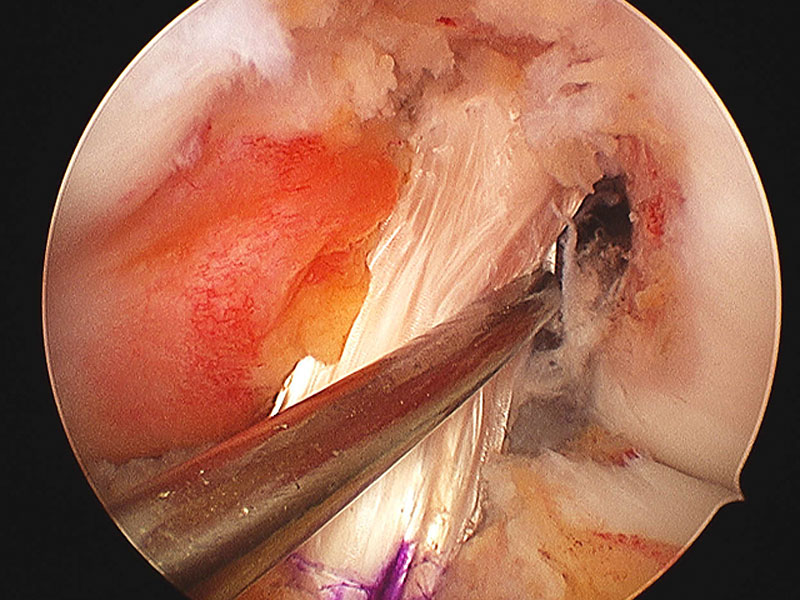Anterior Cruciate Ligament (ACL)
Knee Sports Injury - Anterior Cruciate Ligament (ACL)
What is the ACL?
ACL is one of the main ligaments that hold the femur (thigh bone) and the tibia (shin bone) together and consists of fibrous tissue located in the centre of the knee joint it. It runs from the back of the femur to connect to the front of the tibia.
The ACL is the main controller of how far forward the tibia moves under the femur. If the tibia moves too far in any direction before the muscles react, the ACL can rupture.

The anterior cruciate ligament (ACL) is probably the most commonly injured major ligament in the knee. In the majority of cases, the ligament is injured in patients participating in athletic activity, skiing or after an unprotected fall.
What are the symptoms of a ACL Injury?
You can stretch, partially or fully tear your ACL if you make a sudden movement or quick, sharp turn when you are running or jumping this can be during normal activity or whilst playing sport. The torn ACL then gives rise to on-going inability to exercise and play sport involving twisting, turning and rapid change of direction. The knee will give way followed by pain, swelling and stiffness.
ACL injuries are usually not in isolation and there be additional damage to the meniscus and the other ligaments and bone bruising.
What investigations are needed?
X rays to exclude any bony injury.
A MRI (Magnetic Resonance Imaging) scan that details the soft tissues, meniscus, ligaments and bone marrow.
How ACL Injuries be managed?
First is to help reduce the pain and gain mobility - RICE (Rest, Ice, Compression and Elevation)
Reduce swelling, get movement in the knee joint and get the muscles to function.
The injury can be managed with an ACL rehabilitation programme in patients not intending to return to sport (provided there are no other injuries requiring surgery).
In younger patients who have an associated injury to the meniscus and wish to return sport; surgery with repair of the meniscus if possible and reconstruction of the ACL would be recommended.
Surgery would be scheduled after the acute knee injury trauma has settled, the knee is quiet and has regained it range of movement. Prior to your surgery you will be seen by the physiotherapist given advice on exercises to prepare for your surgery and post surgery.
 |
|
| Knee arthroscopy – ACL graft examination | |
What does ACL surgery involve?
The operation is carried out under a general anaesthetic.
An arthroscopy of the knee is performed (a key hole examination) to assess any damage to the other structures and the ACL. Then treat any damage to the meniscus and then undertake the ACL reconstruction. Mr Aslam Mohammed will take part of the hamstring tendons through small incision at the front of the knee just below the knee joint. He will then make this into the new ligament graft that will replace the torn ACL.
Biolock Femur No3 Screw fixation.
Drill holes/tunnels are made at the correct position in the femur and tibia, following which the new ligament graft is placed in these tunnels and secured using bio absorbable interference screws (Mr Aslam Mohammed’s preferred method of fixation)
The wounds are closed usually with skin clips, local anaesthetic will be instilled into the joint for pain relief. A wool and crepe band will be applied. This is normally a day case procedure, the physiotherapist will have seen you before your operation and will see you afterwards to mobilise you, give exercises to do and arrange follow up physiotherapy. Mr Aslam Mohammed will review you in clinic a few weeks later to explain the findings and procedure, as well as monitor your progress.
What are the risks?
The risks of knee arthroscopy are very low but they always need to be taken into serious consideration before deciding to undergo surgery.
The following are potential risks:
• Thrombosis Blood Clots in the leg - DVT /Clots on the lung – PE
• Infection, Bleeding / Bruising, Swelling
• Wound pain and sensitivity, Nerve and vessel damage
• Graft harvest site pain and scarring
• Joint stiffness, On-going pain and discomfort
• Severe pain and stiffness and loss of use of your knee (complex regional pain syndrome), the cause is not known.
• Loss of confidence to play contact sport and exercise
• Limited or no improvement in symptoms
• Graft can stretch out over time and can also tear again during sport or after a fall
What are the outcomes in ACL reconstruction?
On the whole ACL reconstruction with a hamstring graft gives a stable knee with minimal donor site problems. However, the rehabilitation is slow and deliberate to allow the new ligament graft to heal into the bone tunnels (Up to 12 weeks). During this time you are building up your movements and strength in you leg. It can take some patients up to 12 months to regain muscle strength, full movement and confidence to return to contact sport.
In the long term it is of vital importance to keep the leg muscles strong to protect the ACL reconstruction and be able to do sports. The graft can stretch out over time and also re tear usually after further injury.
However, if there has been damage to the meniscus and / or articular cartilage at the time of injury, then there is a risk of developing degenerative joint disease and arthritis in future years.
Case example - ACL reconstruction
 1. MRI Scan showing torn Anterior Cruciate Ligament (ACL)
1. MRI Scan showing torn Anterior Cruciate Ligament (ACL)
 2. Torn ACL at arthroscopy.
2. Torn ACL at arthroscopy. 3. ACL reconstruction performed by Mr. Aslam Mohammed with a four strand hamstring graft to stabilise the knee.
3. ACL reconstruction performed by Mr. Aslam Mohammed with a four strand hamstring graft to stabilise the knee.
- Arthritis
- Knee Arthritis
- Knee Replacement
- Knee Sports Injury
- Knee Arthroscopy
- Knee Meniscus Tears
- Anterior Cruciate Ligament
- Chondral Injury / Cartilage Injury
North West Hip & Knee Clinics
Services provided:
• Keyhole (minimally invasive)
• Hip and Knee Surgery
• Hip and Knee Joint Replacement
• Hip and Knee Sports Injury
• Hip Arthroscopy, FAI and Labral Surgery
• Knee Arthroscopy - Meniscus surgery
• Knee Arthroscopy and ACL / PCL
• Ligament Reconstruction
• Biologics – PRP, Stem Cell
• Cartilage Regeneration
Mr Aslam Mohammed Consultant Hip and Knee Surgeon